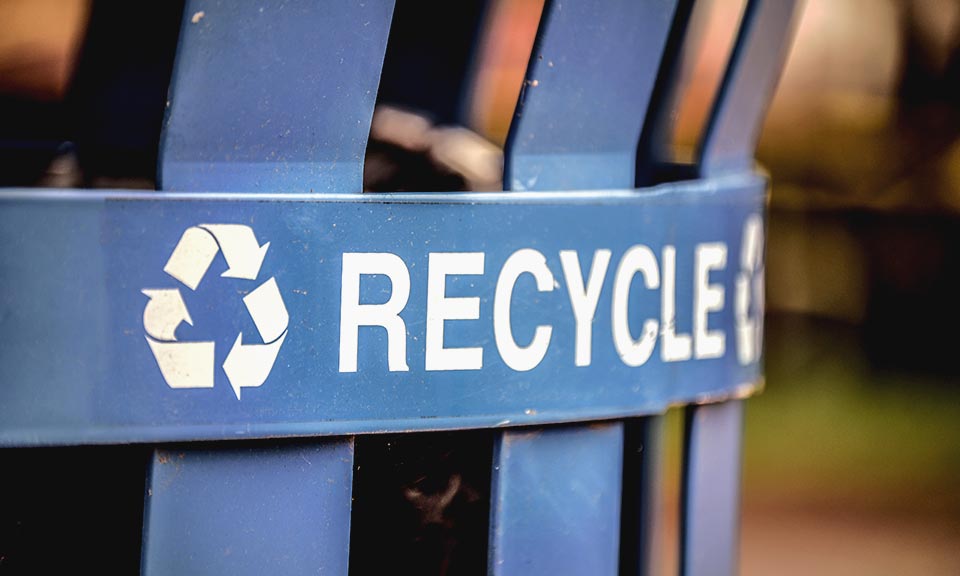INTERVIEW: Looming EU plastics directive at forefront of recyclers' thinking: Petcore president

Some European countries could struggle to meet the EU's 2030 recycled plastic targets, Antonello Ciotti, president of Petcore Europe, a Brussels-based group representing the PET value chain, said in an interview in which he discussed the main issues facing the recycled PET market ahead of the annual Petcore conference.
The single-use plastics directive being implemented by the European Union states that by 2025, 25% of plastic material in PET bottles must be of recycled origin.
"This target makes sense," Ciotti told S&P Global Commodity Insights, pointing to Eunomia data that states as of 2020 the average collection rates of PET bottles in Europe allows to feed up to around 23% of recycled material back into future PET bottles. Forecasting forward to 2025, Ciotti believes that Europe should be able to cope with the goals set out in the directive.
However, going forward to later goals within the single-use plastics directive, such as 30% of plastic in PET bottles should be made up of recycled material in 2030, Ciotti said some former Eastern European countries will struggle. He attributed this not to the capacity of recyclers able to produce recycled PET products, but to lower collection rates in those countries.
Ciotti said the best route to combat collection rate issues is deposit schemes for recycling, which are already in place in some places like Germany, being implemented across Europe.
Ciotti said "the way societies are organized" is a key point to implementation. He pointed to an inherent issue with deposit schemes, namely, the need for dedicated space for the deposit areas within shops. The "population of countries such as Italy and Spain rely more heavily on small shops to purchase their groceries," Ciotti said, which wouldn't have the space and funds to cope with the deposit system. On the other hand, countries such as the UK and Germany have "larger retail chains that would be able to provide the space and funds necessary to commit to the deposit system," Ciotti said.
Ciotti also said he believed the implementation of recycling policies within Europe is more top-down rather than being generated by the masses. He said during the current economic climate, people are more concerned about the price of the bottle they are purchasing, rather than if it is environmentally sustainable. Ultimately, the "final consumer cares about recycling content but does not want to pay more for it."
Europe's growing focus on sustainability, coupled with increasing prices for recycled PET during the first half of 2022, saw many imports heading to Europe, Ciotti said.
With mandatory recycling content policies a rarity outside Europe, flow was opened globally into Europe. The key difficulty facing imports into Europe are certification issues, as the import material may not be up to the standard required by European consumers, Ciotti said.
He also said the question posed about imports at the moment was how to offset the carbon footprint of global travel with the environmental benefits of recycled PET.
"The pollution from transport is much higher than production of plastics in Europe," Ciotti said.
Moving forward, Ciotti hopes that European policy explicitly dictates the input into recycled material should be from a European source rather than any source.
The price rises seen for recycled PET in the first half of 2022 were due to decisions made by brand owners in order to become more environmentally friendly, Ciotti said. This move inflated demand for R-PET, raising the price far above the price paid for virgin PET.
Platts, part of S&P Global Commodity Insights, assessed recycled PET clear flake at Eur2,150/mt FD NWE June 30, with prices falling to Eur1,500/mt FD NWE by Dec. 30.
Virgin PET was assessed at Eur1,730/mt FD NWE July 6, with values falling to Eur1,280/mt by Jan. 4.
While this price trend can be partly attributed to normal R-PET seasonal demand, Ciotti said "recession in September 2022 made people less concerned about recycling," bringing a drop in demand for R-PET products as consumers focused on affording everyday items.
Also, several big brands reversed their goals of high recycled content in their products, leading to reduced R-PET demand.
"All brand owners were pushing to go over the 50% minimum target required by 2025," Ciotti said. "When they realized the price delta between the virgin and recycled was too wide, they reduced their targets. Some brands were aiming for 100% recycled content."
Prices are not expected to bounce back to mid-2022 levels, Ciotti said. But this depends on "what the consumers are ready to pay for the extra cost for recycled content."
Ciotti highlighted a key issue, greenwashing, he thought was facing the recycled plastics industry. He describes greenwashing as when "someone pretends to improve the sustainability of their product but is not."
Ciotti uses an example of a "PET half liter bottle being replaced with a carton box, which takes more energy to recycle." He said the European Commission indicated that 42 percent of claims of sustainability by textile companies were exaggerated, false or deceptive. He added he hoped more would be done to tackle greenwashing.
The annual Petcore conference takes place in Brussels Feb. 1-2.
News
Geopolitical pressures — including rising resource nationalism and a year in which over 50% of countries will be having elections — as well as inflationary pressures have sent energy transition progress into “discord.” A specialty chemicals panel session held March 19 at the World Petrochemical Conference by S&P Global in Houston, Texas, tracked the challenges and opportunities of the energy transition for the industry. Speaking at the session, Roman Kramarchuk, head of climate markets and policy analytics at S&P Global Commodity Insights, said that if the short-term scenario continues, global temperatures could rise 2.4 degrees Celsius by 2100, far above the Paris Agreement’s goal of a 1.4-degree increase. “Over the past few years, we’ve certainly been trending more towards our ‘discord’ scenario,” Kramarchuk said. “We’re trending toward a longer runway for fossil fuels and less [greenhouse gas (GHG)] emission reductions. This is a case of less GDP growth, less trade and less technology transfer.” Since 1990, world GHG emissions have grown 45%, with mainland China, India and the Middle East representing the biggest increases in emissions, at 304%, 241% and 181%, respectively. Over the last 25 years, the Commonwealth of Independent States and the EU have cut their emissions the most, with decreases of 39% and 31%, respectively. The US has cut emissions 1% since 1990. Of S&P Global Commodity Insights’ three energy and climate scenarios, only one, “green rules,” has global temperatures near the Paris Agreement’s 1.5-degree goa, with an expected increase of 1.7-degrees Celsius by 2100l. The “green rules” scenario, however, assumes more technology transfer, cooperation and policy-driven outcomes than is currently happening. “2030 is not that far away,” Kramarchuk said, “and when you think about what the energy transition will take, solar panels can be constructed fast, but anything beyond that — like an onshore or offshore wind plant or a nuclear unit — we’re getting into lead times of 5, 10, or 20 years.” While the US Inflation Reduction Act has helped speed these transformational energy products along, there are still a lot of slowdowns in permitting, especially in Europe. “We joke that there needs to be a ‘Complexity Reduction Act’ in Europe to move things forward,” Kramarchuk said. Harald Schwager, deputy chairman of Evonik Industries AG’s executive board, added that companies are stuck in a hard place. Evonik has signed power purchase agreements (PPAs) to be powered fully by renewable energy by 2030. “The question will be, will production capacity be hampered by the regulatory process and will we have sufficient infrastructure in place to transport enough renewable power for site demand by then,” Schwager said. Distant peaks Commodity Insights’ energy and climate base case pegs the peak years for coal, oil and gas demand to be 2022, around 2030 and 2040, respectively. “When there is a surprise need for energy,” Kramarchuk said, pointing toward the COVID-19 pandemic and a drought in China, which caused a boost in coal usage, “fossil fuels fill that need.” However, “there’s more investment in renewable capacity than we’re seeing in upstream oil and gas,” Kramarchuk said. Under all scenarios, renewable electricity will be the lion’s share of newly generated energy sourcing. Rebecca Liebert, president and CEO of Lubrizol Corp., said that it is the duty of specialty chemical producers to be agile and proactive in bringing innovative and more sustainable products to market. “Political and technical factors are all things we must account for in our bring-to-market timelines. And we get it right a lot of times, but we get it wrong some of the time. Sometimes you get to market before the market is ready for your product. And I think that’s great, to have a solution on the shelf as the market comes along.” Schwager agreed: “In the specialty chemical industry, we have more good ideas than we have money. And there’s no regret on moves for improved efficiency.” While there has been little movement on target setting and market-based mechanisms for growing renewable energy, COP28’s first global stocktake committee called for “countries to contribute to triple global renewable energy capacity and double global energy efficiency by 2030.” “Even though we are heading for the discord path right now, with all the technology solutions and innovation pushes, we’ll be shooting up ahead towards the ‘green rules’ scenario in the long-term,” Kramarchuk concluded. This article was first published in chemweek.com .

News
Two NGOs appealing against permits Initial plan was to start end of 2023 BASF is facing a delay of the operational start of its newly built precursor cathode active materials (pCAM) plant in Finland due to two non-governmental organizations (NGOs) appealing against already-granted permits, a spokesperson for the German petrochemicals company confirmed to S&P Global Commodity Insights Feb. 27. BASF initially aimed to start commercial production at the Harjavalta plant at the end of last year. “The necessary permit to operate this plant has been granted last year by the relevant authorities,” the spokesperson said. “However, two NGOs have filed an appeal against the already granted permit. Next steps and timing will depend on the furtherance of the judicial process before the Vaasa Administrative Court,” said the spokesperson. The pCAM plant will use renewable energy resources, including hydro, wind and biomass-based power and will be supplied with nickel and cobalt from Nornickel’s adjacent refinery. The plant is part of BASF’s plan to supply the battery industry and subsequently automotive industry with lower carbon emission cathode active material. Platts, part of S&P Global Commodity Insights, assessed cobalt metal in-warehouse Rotterdam at $15/lb on Feb. 26, stable from the previous assessment Feb. 23, while the nickel-cobalt black mass EXW Europe payables was at 54% Feb. 26, also stable.

News
The petrochemical landscape has been transformed in recent years by new technologies and the global energy transition, resulting in numerous production pathways and the development of more sustainable products. S&P Global Commodity Insights has created Chemical Connections , an interactive chart which shows the links between chemicals, from upstream feedstocks to derivative products. The second slide offers a map showing our price assessments and benchmarks for chemicals across the value chain around the world. These prices are used by market participants daily to write contracts, monitor their markets and achieve full transparency around transactions.